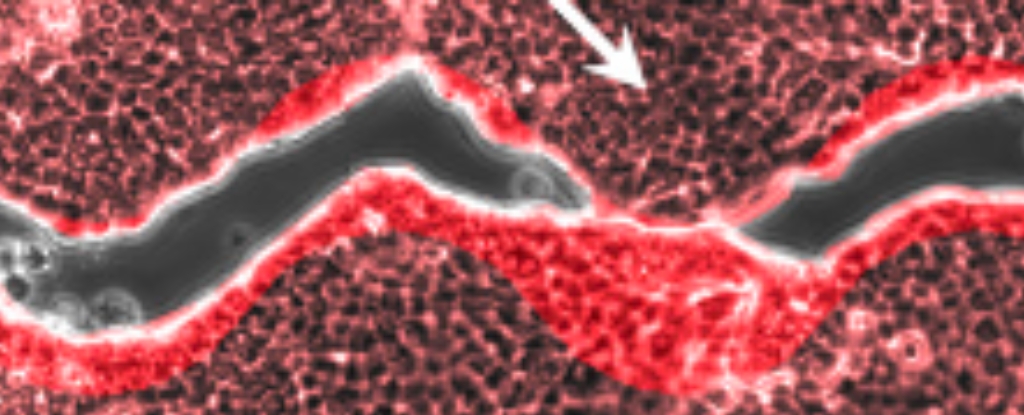Surgical incisions are an essential aspect of wound healing, but not all incisions are the same. While a straight cut may be preferred by some, a zig-zagging path can reduce scar tissue, making it a preferred method for some cosmetic procedures. A recent study by researchers at Nanyang Technological University, Singapore (NTU Singapore) has found cellular differences between the two methods that could lead to more effective surgical incisions.
Research Findings
The study monitored simulated wound healing in biosynthetic materials over 64 hours and found that wavy gaps healed nearly five times faster than straight-edged ones. This is due to distinctions in the cells’ movement pathways. The researchers used Madin-Darby canine kidney (MDCK) cells, which are the same type as those in human skin, to study how epithelial cells close gaps in wounds created with cuts on a skin created from a micropatterned hydrogel.
They used a method called particle image velocimetry to watch MDCK cells work near the cuts. The wavy cuts had a radius of curvature of either 50, 75, or 100 micrometers. The team paid special attention to how the width and curvature of the cuts affected the process. Cells near the straight wounds moved along the edges, while wavy wounds made cells move in a swirl that resembled a vortex. This enabled cells to quickly connect with similar cells on the opposite site of the wound edge, forming a bridge and closing the wavy wound gaps faster than straight gaps.
The range of curvature didn’t have a significant effect on the speed of healing in wavy wounds, but the width needed to be small enough to form bridges. The experiments showed success with a maximum gap size of 75 micrometers. The team notes that this top distance may be different for different cell types, and there could be an effect on bridge formation and healing speed if the curvatures are smaller or larger than the ranges they used.
The researchers also noticed the position of the cell nucleus. In cells not involved in healing a wound, it was roughly in the middle. Yet in cells over the healed gaps, it was clearly off-center, seeming to move closer to the cell edges to avoid sitting directly over the gap. This was more noticeable in cells over the wavy wounds. They suggest that this indicates the cells that closed wound gaps were under a lot of mechanical tension, and the cells near zig-zagged wounds were more stretched than those over the straight lacerations.
While the researchers considered if the bridge formation could have been helped by the wavy edges causing more cells to divide and grow, increasing the number of cells available for healing, calculations ruled this out. The team concluded that “observations clearly demonstrate that straight and wavy edges provided different geometric confinements to cell migration, generating different cell movement patterns…thus different healing efficiency.”
Implications
The study contributes to the scientific understanding of the underlying principles of the wound-healing process. Clinicians and surgeons can use this knowledge to develop better strategies, such as incision methods, for patients’ wound management care in the future. The findings of this study could lead to more effective wound healing, with less scarring, and faster recovery times. By choosing the right surgical incision method based on the size and curvature of the wound, clinicians and surgeons can ensure that their patients receive optimal care.


Leave a Reply